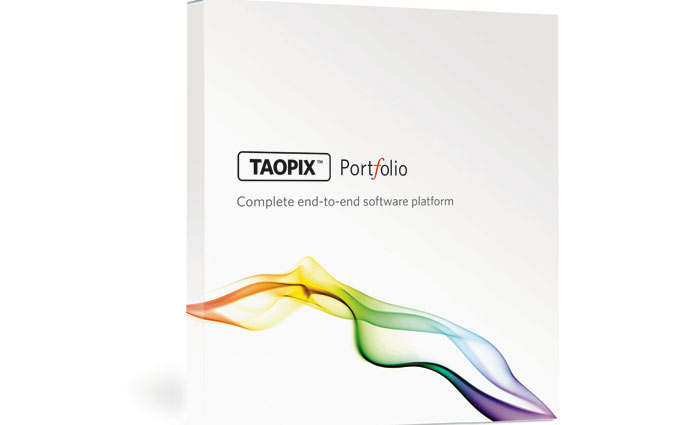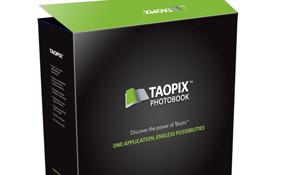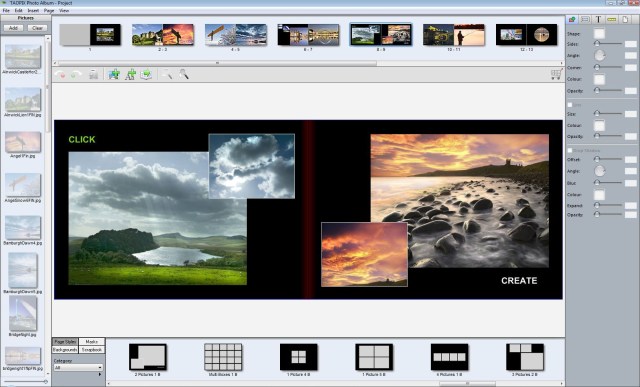
What does the product do?
Taopix is a photo product creation and production platform. The software provides both web- and desktop-based applications for creating and ordering personalised photo merchandise. The printer can create multiple separate branded websites, both its own and ‘white-label’ sites for other companies. The range of products encompasses photobooks, posters, calendars, greetings cards and gifts, including mugs, t-shirts, key rings, mouse mats, mobile phone pouches, postcards and playing cards. Markets served include direct to consumer (B2C), B2B to professional photographers, as well as partnering with an existing brand to sell direct to their customers (B2B2C).
When was it launched and what market is it aimed at?
First launched in 2007, Taopix was one of the first off-the-shelf products to enable a print business to enter the personalised photo products market. Version 3.5 was officially launched to Australian and New Zealand markets at PacPrint 2013, where Taopix also announced its exclusive distribution partnership with local distributor RD Xmedia.
How does it work?
There are four modules: Creator, which the print company uses to create products and templates for customers to choose from; Designer, which the consumer uses to create and order their products online; Control Centre, a web-based element for administering brands, products, tax, shipping, e-commerce and payment gateways, etc; and Production Client, which receives orders from the Control Centre and can integrate with a production site’s workflow. At PacPrint, Taopix unveiled another integration with the brand-new HP SmartStream Production Center workflow software for HP Indigo customers.
How does it differ from previous versions?
Version 3.5 is a significant upgrade. “There are more than 200 enhancements and 20 additional features based on customer feedback,” according to Richard Watson, Taopix’s president of Asia. Key features include a new image-fixing button that addresses nine quality issues, including straightening pictures taken at a misaligned angle, with one click. In addition, he says back-end enhancements make it easier to create new brands and products. Text can be processed as vector, in addition to raster, providing additional quality.
Version 3.5 also contains many new business tools that allow the commercial printer to engage with partners to sell photo merchandise and track the origin of orders to award commission. These tools can also work for the retail sector whereby the origin of orders can be analysed by store location.
The new version also contains an external user authentication API that allows Taopix customers and their brand partners to use a single database containing user login and password data to operate multiple platforms. So the end user can use one login and password to access their accounts within different systems.
How easy is it to use?
“Our customer feedback continually tells us that Taopix is easy to use – many customers say they choose Taopix ‘because it just works’ really well for them. We also know consumers enjoy the experience of using the Taopix Designer and ordering their products online. For example, we recently had a professional photographer – who ordered photobooks from a large pro lab that had just switched to using the Taopix software – tell us that we’d helped reduce what was previously a five- to seven-hour project to something that took just thirty minutes,” says Watson.
What support is on offer?
An annual maintenance contract, taken by 95% of users, and costing 20% of the licence fee, covers upgrades and support.
How much does it cost?
The basic software is available in three configurations, with prices starting from $20,000 for the Solo version, to $35,000 for the Pro and $55,000 for the Enterprise.
Where they differ is the number of brands you can create and the level of integration. Solo allows only a single brand, while Pro supports up to 10. The Enterprise version comes with a multi-site production module and can add links to digital asset management systems, which enables affinity sites to be created using content from the partner, such as film, book or TV characters.
What is the USP of the product?
Watson says it’s the ease of use for both the printer and the consumer, thanks to the product creation and ordering application tools, which he says are continuously developed and enhanced in line with customer feedback.
What’s the sales target? How many are installed worldwide?
Worldwide there are more than 400 installations, of which 50% of the customer base is in the southern hemisphere.
The current sales target for Taopix is to continue to grow, particularly in Australia and New Zealand, which is the territory covered by RD Xmedia – the new and exclusive distributor for Taopix within these territories.
Richard Watson adds: “Australia and New Zealand are territories that have always produced good results for us and they continue to demonstrate strong growth. I believe we have a great opportunity with RD Xmedia to demonstrate the compelling business benefits of personalised photos, and the flexibility that the Taopix platform offers to commercial printers looking to break into this lucrative market.”
Comment below to have your say on this story.
If you have a news story or tip-off, get in touch at editorial@sprinter.com.au.
Sign up to the Sprinter newsletter


